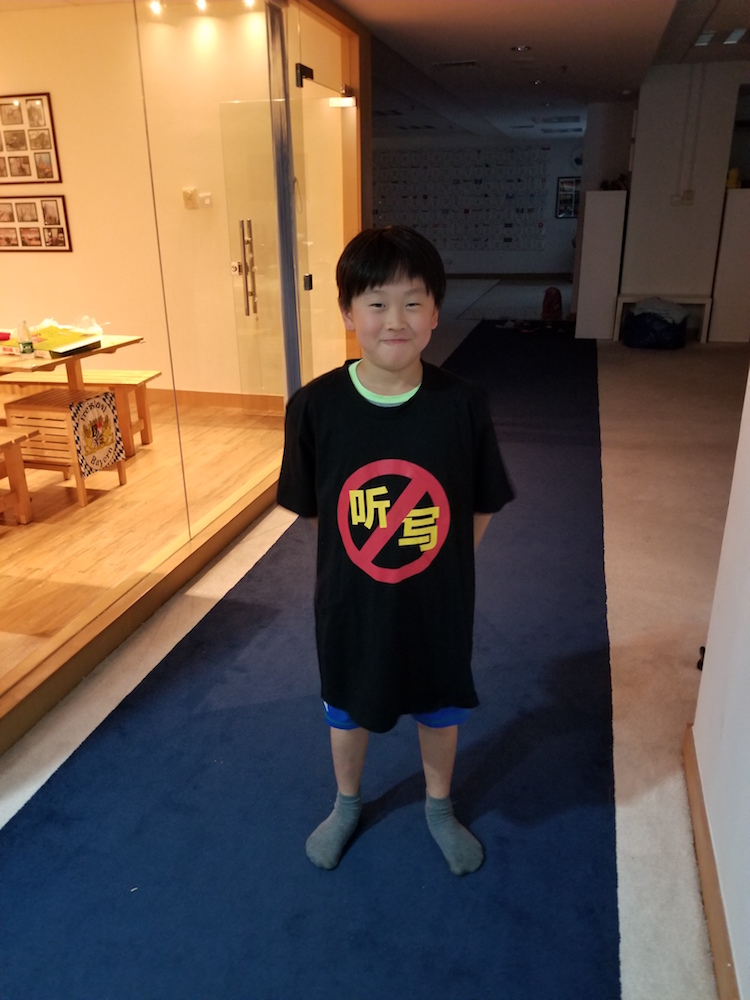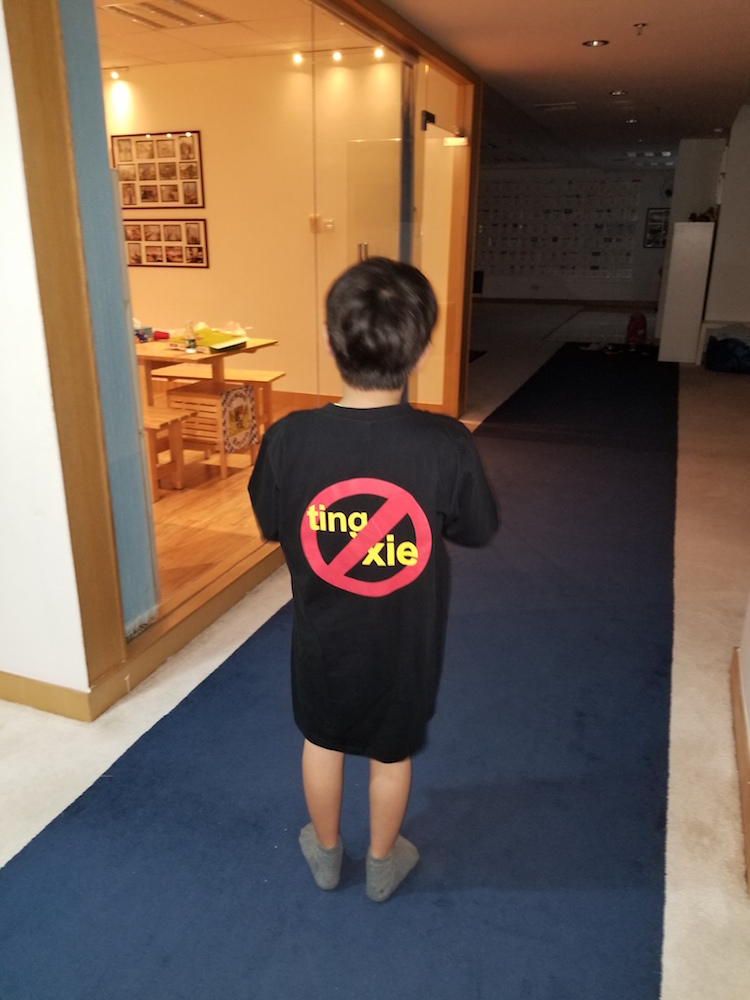No dictation
« previous post | next post »
The boy in the photos below is Alexander Aurelius Wang. He is one of our youngest fans in Shenzhen. He doesn't like writing characters from dictation (tīngxiě 听写 / 聽寫):
[click to embiggen photos]
For some of the reasons why many children hate dictation (tīngxiě 听写 / 聽寫), here are a few of the previous posts that touch on it in one way or another:
- "Copying characters" (2/11/13)
- "How to generate fake Chinese characters automatically" (12/30/15
- "Spelling bees and character amnesia" (8/7/13)
- "The future of Chinese language learning is now" (4/5/14)
- "Which is worse?" (1/21/16)
- "Writing Chinese characters as a form of punishment" (11/1/15)
- "How not to learn Chinese" (4/16/17)
Now, it's curious that most kids detest Chinese character dictation, while a lot of children love spelling bees, even though it's hard work:
- "The worldly sport of spelling" (6/2/18)
How do you explain the disparity?


Cyndy Ning said,
June 4, 2018 @ 8:56 pm
Perhaps it's all in the approach?
As part of our community outreach, we organize Chinese language fairs, and speech, calligraphy, and dictation contests, along with exhibitions performances and film festivals and symposia and the like, for the local schools. Surprisingly, the dictation contests are rather popular. We have individual and team entries with nearly 100 contestants in all. The team dictations turn into fiercely fought battles among rival schools, with a gallery of onlookers cheering on their favorites.
Within the classroom, when we have dictations we make them student controlled affairs. Students get into groups and, within say 5 minutes, come up with a list of sentences to challenge their classmates (and themselves). Then when the dictation begins, each group takes a turn saying a prompt out loud, repeating as often as necessary, as long as anyone else in the class is still saying "Qǐng zài shuō!" within a time limit. This way, there is some pressure on the "speakers" to articulate as clearly and accurately as possible.
For the character writing itself, there could be a number of approaches:
1. Each student gets a personal white board and writes her own response. The team gets a point for every correct response produced.
2. There is only one white board per team; students write one character each, circulating the board around the table. Only the person with the marker may write; if he is struggling, his teammates (who have access to their notes) may help, ORALLY. (Tíshǒu on the left, shì on the right!!!)
As you may imagine, there is full engagement and lots of laughter.
In my experience, many students love writing characters. Some take Chinese just so they get to work with characters (they've said as much on semester surveys). On quizzes, even when the instruction says, "Write in pinyin, characters, or a combination of the two," more than half the class (only about 25% heritage) chooses to write exclusively in characters. Only a couple in a class of about 20 will choose to write exclusively in pinyin. In the grading scheme, the point value for both formats is the same.
When their work gets posted publicly, many "authors" want their writing to be in characters (fántǐ, even, to maximize the "cool" quotient), to show off how accomplished they are.
mg said,
June 4, 2018 @ 10:12 pm
There's a BIG difference between dictation and spelling bees – one is compulsory and the other isn't. A better comparison would be between dictation and spelling tests – and there are plenty of kids who don't like spelling tests.
Cyndi's post points out how dictation can be fun in a playful context – which is not the situation one would expect in a Chinese classroom.
alex said,
June 5, 2018 @ 7:27 am
@mg
"one is compulsory and the other isn't."
"which is not the situation one would expect in a Chinese classroom."
absolutely correct, those are the points.
There was a post with the video of the teaching slapping students that are lined up in the face because they couldn't tingxie poems or idioms. Slapping on the back of the head, shoulders, back is very common here.
Nikhil Sonnad said,
June 5, 2018 @ 7:52 am
Where can I get one of those t-shirts?